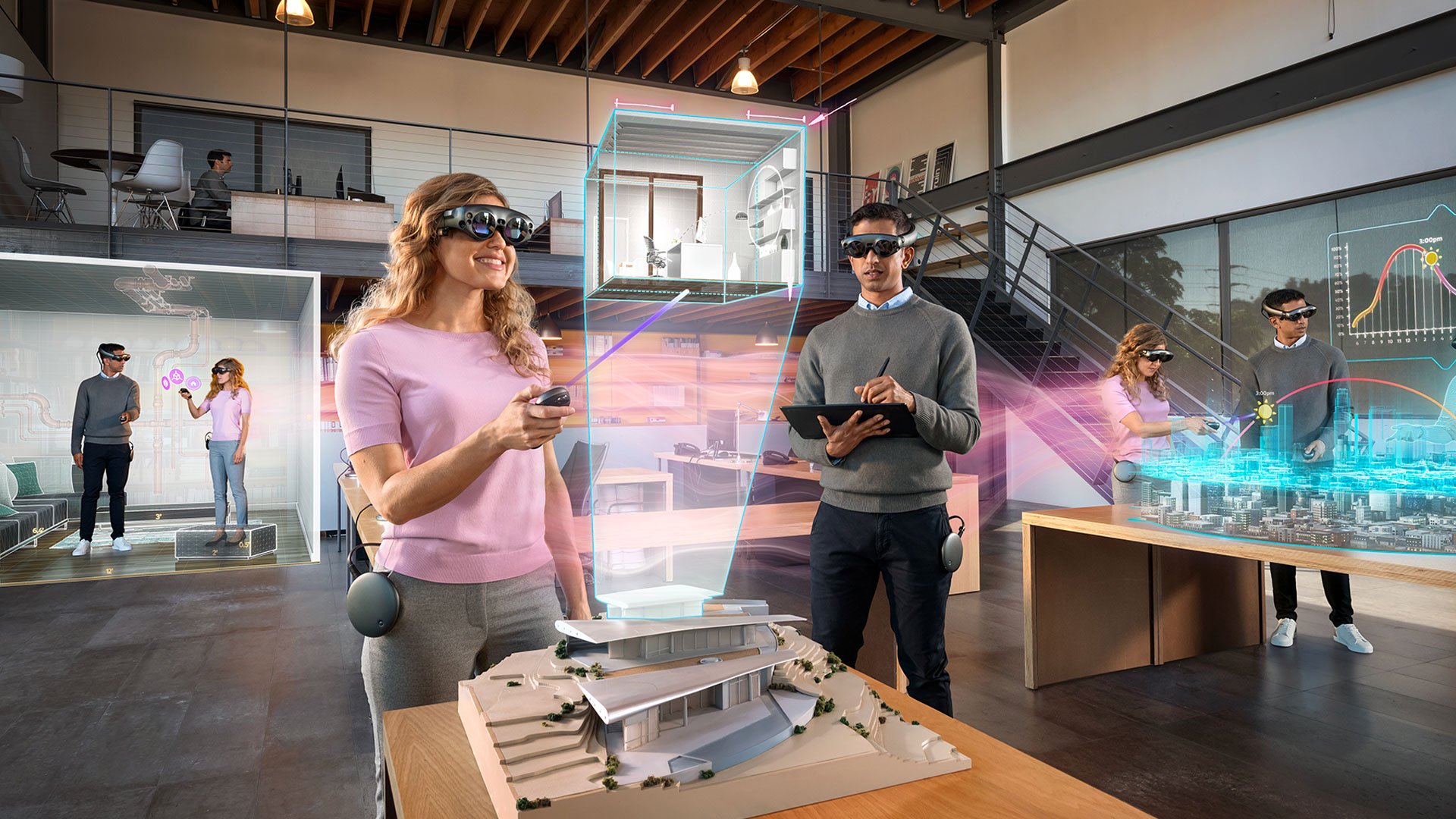What is Spatial Computing?
During Apple’s WWDC, they announced the much-anticipated Vision Pro headset that uses spatial computing.
Spatial computing is a technology that allows computers to blend the physical and digital worlds. Even though other companies have released spatial computing headsets, Apple’s intent to go into the spatial computing market shows that the company believes that is where the future is heading for computing.
How Does Spatial Computing Work?
Spatial computing seamlessly brings together the physical and virtual worlds. Users can experience this by wearing headsets such as the Apple Vision Pro, Microsoft HoloLens, Meta Quest Pro, and Magic Leap. These devices can display virtual objects in three dimensions in the real world such as virtual furniture in your living and you can walk around it and see if it fits in your room.
Spatial computers rely on several technologies to blend the digital and physical worlds. Spatial headsets have several cameras and sensors that capture visual data of the environment such as position, orientation, and movement of objects. Using sensor fusion, spatial computers can combine the data gathered from the cameras and sensors to create an accurate and comprehensive view of the environment. Spatial computers use spatial mapping to create a 3D model of the environment which enables more precise placement and manipulation of digital content.
Spatial computing can understand the depth of the environment which offers realistic and natural interactions with virtual objects that corresponds to the physical world. Eye-tracking, handheld controllers, and motion sensors enable users to interact with and manipulate virtual objects. For example, Apple Vision Pro uses hand-sensor-detection sensors to detect you pinching your fingers or flicking your wrist. Spatial computing may also offer speech recognition enabling users to control objects with their voice.
How Can We Use Spatial Computing?
The spatial computer has a lot of potentials that could revolutionise several industries by the way we work.
Education and Training
Spatial computing can provide engaging and interactive learning experiences that could enhance knowledge retention and skill acquisition. Medical students could use spatial computing to practise surgical procedures in a virtual environment that stimulates real-world conditions without endangering patients.
Healthcare
Spatial computers offer new ways for health professionals to diagnose, treat, and monitor patients. Doctors could use spatial computers to overlay diagnostic information onto the real world or see patients’ medical image scans while operating on the patient.
Architecture and Design
Spatial computers will enable architects to create, visualise, and modify designs without the need for physical prototypes. This can save time and cost while allowing for more iterative design processes. Designers can also use spatial computers to create virtual prototypes and test their functionality and ergonomics in different physical settings.
Entertainment
The spatial computer has the potential to immerse viewers in the scene or event by placing them in the middle of the action. Gamers can use spatial computers to improve game experiences by providing natural and intuitive ways to interact with a game by using hand gestures to manipulate objects.
Future of Spatial Computing
In past years, the spatial computer has had mixed success as technologies were not ready at the time. However, as technologies have advanced, and companies have invested millions into the area, spatial computing has started to gain development momentum. The biggest challenge that is preventing spatial computers from taking off is the price. The Apple Vision Pro is being priced at $3499 which will price out a wide demographic. There are also some health concerns as they can cause fatigue and motion sickness during extended use. Over time cost of various parts will go down and technology development is continuously being refined. Apple’s entry into the spatial computing space may lead to a big push in space and might be a defining moment for spatial computing.




